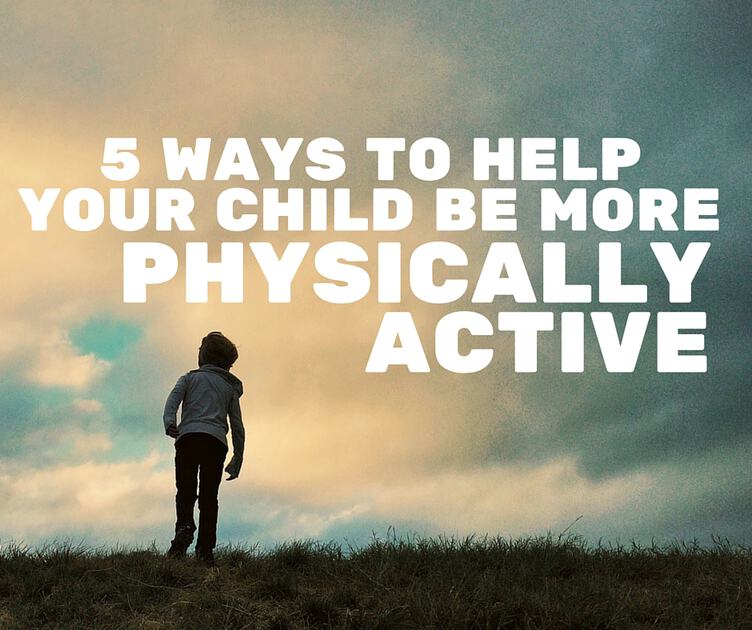
According to a June 2015 report from the Centers for Disease Control and Prevention (CDC), 17 percent of children in the U.S. are obese. The CDC recommends that children engage in an hour of physical activity per day to fight against obesity and to maintain good health, but according to 2013 data, only 27 percent of adolescents meet these physical activity recommendations.
As a parent, you play a key role in encouraging physical activity and ensuring that your child completes an adequate amount of exercise to maintain his or her health. Here are some strategies that will help your child to be more physically active.
Embrace the Outdoors
Sending your child outside to play can encourage her to be more active. In fact, a 2008 study in the International Journal of Obesity found that children who spent more time outdoors engaged in more physical activity, and they were less likely to become overweight. Study authors concluded that time spent outdoors could effectively increase children’s levels of physical activity. The specific outdoor environment can also promote physical activity. In 2012, researchers for the journal Health & Place found that children who were exposed to green spaces were more likely to complete moderate or vigorous intensity exercise. In fact, those who were exposed to green spaces for more than 20 minutes daily were almost five times as active as children with almost no exposure to green spaces were. Head to a park to play a game of Frisbee on the grass, or encourage your child to ride a bike on a trail close to your home to take advantage of this benefit. Whatever activity your child chooses, time spent in nature offers an opportunity to be active.
Allow Time with Friends
Your child might be more active when spending time with friends compared to when he is alone. In a 2014 study in the Journal of Physical Activity & Health, researchers analyzed activity levels among young children when they were alone, in addition to when they were with a friend. Children played in a gymnasium, where they could choose between sedentary activities or physical activity. Results showed that children were 54 percent more active when playing with a friend compared to playing alone. Arrange weekend play dates to give your child the opportunity to shoot hoops or play a game of tag with his friends.
Set a Good Example
You can be a role model for your children by making exercise a priority in your own life. In fact, children who see their parents being more physically active are more active themselves, according to the research. A 2013 study in the Journal of Physical Activity & Health showed that children were more physically fit when they perceived at least one of their parents to be physically active. Teach your children about the importance of exercise, and show them your commitment by maintaining a regular workout regimen. Better yet, involve your children in your exercise routine. Take a walk as a family after dinner, or take your children hiking with you on the weekend. You can also plan family bike rides or head to the pool for an afternoon of swimming.
Adopt a Dog
Bringing home a dog will not only satisfy your child’s desire for a pet; it could also help her to get more exercise. Walking an active dog encourages your child to be active herself, and it can also teach responsibility. Furthermore, the research has supported dog ownership as a method for increasing activity levels in children. A 2015 study in the American Journal of Health Promotion found that children who walked or played with their dogs spent about an hour each week engaged in these activities, and they were more likely to meet physical activity guidelines than were children who did not walk or play with dogs. Rescue an active breed, such as a German Shepherd or Siberian Husky, from the local shelter, and your child will have a reason to get outside and take a walk or play a game of fetch with his furry friend. Remember to keep both your dog and our child safe when they’re playing outdoors. Tools like a wireless dog fence or long lines can help reduce escape and ensure your child and dog are never left alone when playing. This is a good idea to ensure both can play respectfully with each other.
Sign up for Sports
It seems logical that participation in sports can increase your child’s activity levels. Between time spent at practices and on the playing field, sports require significant amounts of physical activity. In 2015, researchers for the journal PLoS ONE found that children who played soccer engaged in more moderate and vigorous physical activity, equal to an additional 5 to 20 minutes of exercise per day. Let your child choose a sport he or she wants to be a part of, and free time will be spent being active instead of watching TV or playing video games.
Sports participation is just one of several ways to encourage your child to spend more time being active. You can also reduce sedentary time by making exercise a priority in your own life, and by utilizing strategies such as asking children to walk the dog or allowing them to play outside or spend time with friends. Whatever methods you choose, your commitment to increasing your child’s physical activity levels will have a positive and lasting impact on his or her health and well-being.

